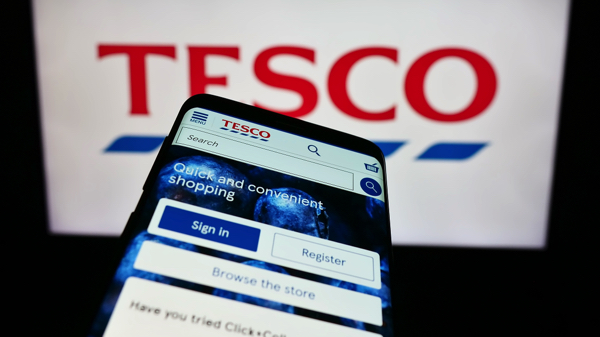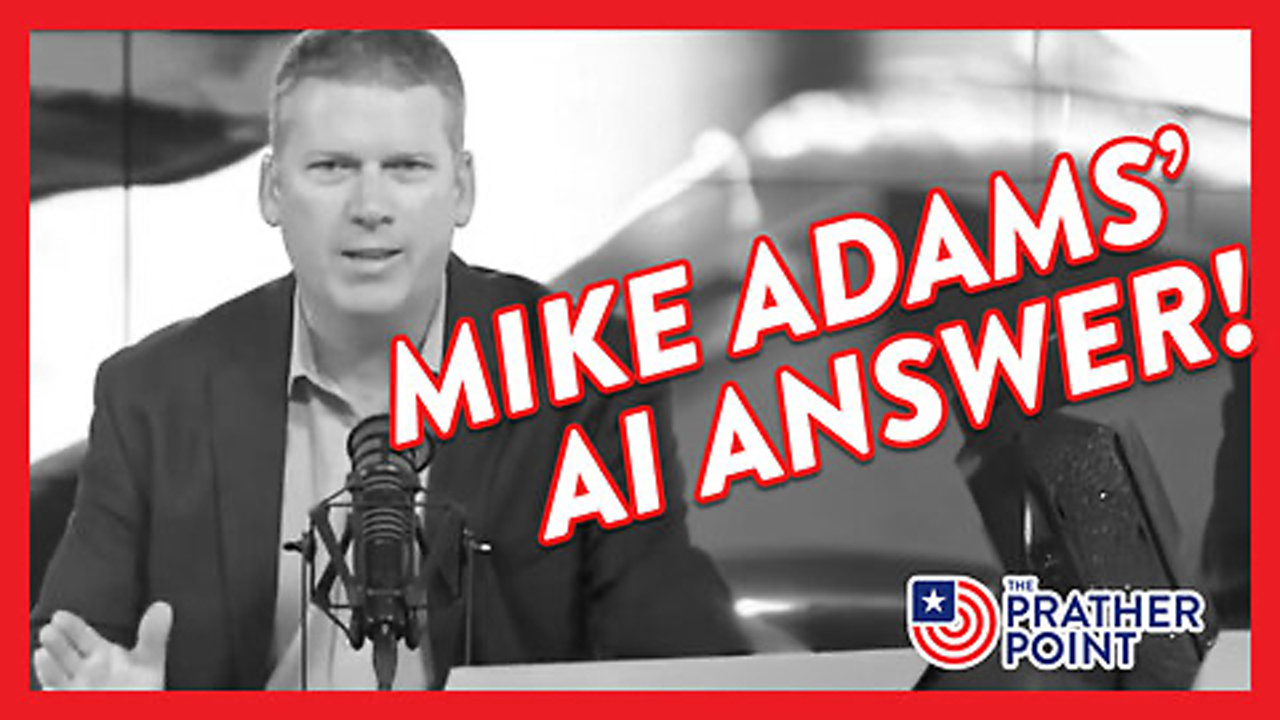“I assure you all options are open on the southern front. They can be adopted anytime.” Summary recap: Hezbollah Secretary-General Hassan Nasrallah’s speech went for [more…]
Caffeine myths debunked: What science really says about your daily coffee habit
(NaturalNews) Moderate coffee consumption (3-4 cups/day) doesn’t dehydrate youâwater balance remains stable unless intake exceeds 5+ cups. Sweat rates and …
Tesco’s Aubergine Katsu Bao Buns RECALLED over allergen labeling issue
(NaturalNews) Tesco pulled its Aubergine Katsu Bao Buns because “milk” wasn’t listed on the label â a hidden danger the U.K. Food Standards Agency says can t…
“Profound revelation” on child deaths prompts FDA to investigate adult fatalities after COVID shots
(NaturalNews) The FDA has expanded its urgent investigation into reported deaths following COVID-19 vaccination, now including adults after an initial focus on …
The Soul vs. The Machine: A preview of the AI-ruled future where humans are obsolete
(NaturalNews) AI represents an unprecedented danger to human freedom, dignity and consciousness, aiming not just to augment but replace human thought, creativit…
Moonscape may hold secrets of Earth’s ancient atmosphere, offering life support for future lunar explorers
(NaturalNews) Imagine a world where the moon is not just a distant, barren rock but a silent archive of our own planet’s history, a celestial sibling that has been …
Chocolate fountain of youth? Cocoa compound tied to youthful cells
(NaturalNews) A large European study found an association between higher blood levels of theobromineâa compound in cocoaâand markers of a younger biological…
Pregnant woman found dead; now sordid family-affair accusations and mystery of her baby’s grisly fate emerge: Court docs
The mother of a slain pregnant woman found in a Michigan forest has confessed to committing grisly acts against her daughter and her unborn grandson, according to new court documents. The case also has taken a shocking twist as sordid accusations of illicit family affairs have emerged.
As Blaze News reported earlier this month, 22-year-old Rebecca Park — who was approximately 38 weeks pregnant — was reported missing Nov. 4, according to the Wexford County Sheriff’s Office.
‘Your baby is gonna die.’
Following weeks of intense searches for the missing pregnant woman, Park’s body was found in the Manistee National Forest on Nov. 25 — just three days after she was due to give birth. However, Park’s child was no longer in her womb.
The Michigan Department of Attorney General stated that 40-year-old Cortney Bartholomew and 47-year-old Bradly Bartholomew “lured” Park to their home in Wexford County. Cortney Bartholomew is Park’s biological mother, who gave up her daughter for adoption as a young child; Bradly Bartholomew is her stepfather.
“The couple then allegedly tortured Park in an attempt to remove the unborn infant, resulting in the death of both,” the attorney general said.
According to MLive, Wexford County Prosecutor Johanna Carey said, “Mr. Bartholomew brought Rebecca to their home, forced her into another vehicle, and took her into the woods, where they stabbed her, forced her to lie on the ground while they cut her baby out, ultimately causing her death and the death of the baby.”
Cortney initially denied any involvement in the murder of her daughter, according to police.
However, Cortney later confessed to cops that Park was still conscious when she cut the baby out of her daughter while Bradly held a knife to her throat, according to court documents.
Cortney claimed she cut the baby out of Rebecca in an attempt to save the child so she could then take him to his father, court documents allege.
According to a probable cause affidavit obtained by UpNorthLive, “When she cut the baby out, Cortney said that Rebecca was still conscious, and Bradly was holding the knife to her throat.”
Court docs added that Cortney told Rebecca to lie back and said, “Your baby is gonna die.”
The affidavit said Bradly told law enforcement that the baby was not alive when the child was cut out of the womb. Cortney informed investigators that the baby was not breathing or crying when the child was removed from the womb, court documents state.
Court docs also indicate that Bradly told detectives that after Cortney couldn’t revive the baby, she said, “The bitch killed my baby.”
According to the affidavit, Bradly accused Cortney of killing her daughter because she wanted another child, but the couple couldn’t adopt because he’s a convicted sex offender.
“Bradly agreed that he believes that Cortney is capable of slicing open her own flesh and blood and taking a baby out,” the affidavit reads. “He agreed that Cortney is obsessed with wanting another baby in her care and custody.”
When Cortney asked about her grandson, who had just been cut from his mother’s womb, Bradly replied, “Oh, I stuck him in a cooler, stuck him in a trash bag, threw him in the trash,” the affidavit states.
“I slit her f**king throat, bitch deserved it,” Cortney claimed her husband told her, according to Law & Crime.
In a strange twist, Cortney allegedly admitted to having a romantic relationship with her daughter Rebecca’s fiancé — 43-year-old Richard Falor — who also is the father of Rebecca’s unborn child.
“Cortney then reports how Rebecca and Richard Falor were initially dating, and [when] they broke up, a relationship between herself and Richard then commences,” the affidavit indicates.
Court documents claim Cortney rejected Falor and that he then resumed his relationship with Rebecca.
“Cortney also reported that Richard had returned to her residence and raped her, forcefully, causing her to have a miscarriage of the baby she was carrying,” the affidavit states, adding that “a report of this incident was made with the sheriff’s office, however, Cortney said Richard was not charged.”
Cortney claimed that Falor had been abusive and aggressive with Park, and she encouraged Rebecca to leave him.
The affidavit reads, “[Cortney] again claimed that this was a revenge plot because she had a sexual relationship with Richard and because Richard got Bradly put in jail. She claimed that Bradly wanted to hurt Richard.”
The 18-page probable cause affidavit alleges that Falor turned in Bradly last year on a sex offender registration violation.
Bradly received a 180-day jail sentence for an unspecified violation related to his being on the sex offender registry, according to court records obtained by People magazine.
Court documents indicate that Cortney told authorities that Bradly said Falor also deserved what’s coming to him, and it “just happened to be your daughter that’s going to pay for it.”
Cortney claimed Bradly told her that he planned to cut the baby out of Rebecca right in front of Falor after doing an internet search about C-sections, court docs say.
The stepfather asserted that Rebecca’s sister — 21-year-old Kimberly Park — also had a “relationship” with Falor.
“Bradly reported that Kimberly is jealous of Rebecca, and that he is aware that Kimberly has had a relationship with Richard in the past,” the affidavit states.
Over the last two weeks, Rebecca’s mother, stepfather, sister, and fiancé have been arrested.
People magazine reported that Kimberly has been charged with tampering with evidence, lying to a police officer, and filing a false report. She is on house arrest after her bail was reduced from $750,000 to $5,000.
Falor was charged with distributing methamphetamine, according to the New York Post. He pleaded not guilty Dec. 2.
Cortney and Bradly each were charged with one felony count of first-degree premeditated murder, one felony count of murder, one felony count of torture in a place of confinement, one felony count of conspiracy to commit torture, one felony count of assault of a pregnant woman with the intention to cause miscarriage or stillbirth, one felony count of conspiracy to commit assault on a pregnant woman with the intention to cause miscarriage or stillbirth, and one misdemeanor count of removal of a dead body.
If convicted of any of the felonies, the pair faces up to life in prison.
Court records identify Bradly Bartholomew as a habitual offender, which could result in harsher penalties.
The Bartholomews were jailed without the possibility of bond.
Court appearances by Cortney and Bradly have been postponed until Jan. 13, 2026, WWTV-TV and WWUP-TV reported.
Like Blaze News? Bypass the censors, sign up for our newsletters, and get stories like this direct to your inbox. Sign up!
True crime, Rebecca park, Rebecca park mother, Rebecca park update, True crime news, Crime, Michigan
Gavin Newsom ridicules Elon Musk over his trans-identifying son — and Musk responds
Elon Musk fired back at the governor of California after he ridiculed the billionaire entrepreneur for being estranged from his transgender-identifying son.
Gov. Gavin Newsom (D) was defending his comments in support of transgender health care when he took a potshot at Musk and his son, which many found to be in poor taste.
‘I assume you’re referring to my son, Xavier, who has a tragic mental illness caused by the evil woke mind virus you push.’
“I want to see trans kids; I have a trans godson. There’s no governor that’s done more pro-trans legislation than I have, and nobody has been a stronger advocate,” Newsom said in the video.
Newsom posted a video of his comments, along with a snipe at Musk apparently comparing his relationship with his trans-identifying godson to that of Musk with his son.
“Correct. We’re sorry your daughter hates you, Elon,” he wrote.
Musk took the high road in his response.
“I assume you’re referring to my son, Xavier, who has a tragic mental illness caused by the evil woke mind virus you push on vulnerable children,” Musk responded.
“I love Xavier very much and hope he recovers,” he added. “My daughters are Azure, Exa (she goes by Y) and Arcadia, and they do indeed love me very much.”
Others piled onto Newsom for the bizarre insult.
“Sick bastard. Gavin, tell your henchmen to leave kids alone,” Republican Sen. Ted Cruz of Texas replied.
“This is raw evil, from a government account. I will do anything I can to stop this cretin from gaining more political power,” Palantir founder Jon Lonsdale responded.
“One of the primary motivations of the Left in pushing gender ideology onto children is to divide them from their parents and undercut the family unit. They relish in it and will not stop no matter how many elections they lose,” Kaylee White of Fox News replied.
RELATED: Newsom gets nailed with online backlash over AI video with Trump in handcuffs
“Most vile of vile,” actor Dean Cain responded.
Newsom is considered a front-runner in the possible candidates for the Democratic nomination for president in 2028. In one recent poll, he garners 24% of support from Democratic voters, just behind Pete Buttigieg, who has support from 28% of those polled.
Like Blaze News? Bypass the censors, sign up for our newsletters, and get stories like this direct to your inbox. Sign up here!
Gavin newsom, Musk vs newsom, Musk’s transgender son, Gavin on trans issues, Politics
BREAKING: Democrats Launch Massive Trump/Epstein Hoax By Editing Already Public Photos To Make The President Appear Guilty!
President Trump must address this deception head-on by exposing the real Deep State Democrat degenerates who run/promote child sex trafficking rings!
WORLD EXCLUSIVE: “We Are Dealing With A New Kind Of Totalitarianism – A Liberal Totalitarianism!”
“If America removed support from NATO, it would be destroyed in one moment – there would be no NATO!” says Alexander Dugin.
‘Stop that bulls**t’: David Spade mocks tree-lighting ceremony that avoids use of the word ‘Christmas’
Comedian and actor David Spade offered an example of people deliberately avoiding even mentioning Christianity while trying to keep the faith’s holiday traditions in place.
Spade made the comments about a local mall ceremony to light a non-Christmas tree on his podcast with fellow “SNL” alum Dana Carvey, who agreed with his criticism. The “Fly on the Wall” episode was published on Sunday.
‘I’ve never met someone from another religious faith that was upset about a Christmas tree.’
“I will say that Christmas is taking a little bit of a beating lately,” Spade said.
“It is December, and I saw the other day there was a tree-lighting ceremony for the Christmas tree in some dopey mall, but it said ‘tree-lighting ceremony,'” he added. “And they were careful not to say the word ‘Christmas’ during the whole ceremony.”
“No!” Carvey responded.
Spade went on to mock the idea of lighting a tree for a non-Christmas holiday reason.
“Why? So it’s just a tree?” he asked.
“To consciously avoid that, then what is the tree for?” Spade continued. “A December to remember? Is it a Lexus dealership? Why do we have — for the whole month? Isn’t it for Christmas?”
Carvey pointed out that Christmas has come to include everyone because it has become somewhat secularized.
“I’ve never met someone from another religious faith that was upset about a Christmas tree,” he added.
“I’d say stop that bulls**t,” Spade said.
“Yeah, ’cause everyone loves Santa and the tree and all the trappings,” Carvey replied.
“They like all things about it,” Spade said. “Don’t say that word.”
RELATED: Nigerian Christians are being murdered by Islamic radicals. This congressman has had enough.
Spade also made brief mention of the horrific persecution of Christians in Africa.
“Like, is this where we get the hammer? You can’t say that about anyone else. … We’re taking a beating down in Africa. It’s like, this is not the year to be Christian. I will tell you that,” he added.
Like Blaze News? Bypass the censors, sign up for our newsletters, and get stories like this direct to your inbox. Sign up here!
War on christmas, Celebrities on christmas, Persecution of christians, Politics, David spade
Fed Trims Rates Again—Gold Vaults Past $4,200 Anyway
Inflation, the Fed admits, has “moved up since earlier in the year and remains somewhat elevated.”
Inflation, Interventionism, and Intergenerational Resentment
Inflation generates far more than higher prices and distortions of the structure of production; it warps the moral and economic fabric that makes intergenerational cooperation [more…]
The Pandemic Revealed the Most Cowardly Society of All Time
In terms of importance, the Covid-19 pandemic was the biggest event in human history since World War II. Since that time, nothing has caused as [more…]
Canada’s euthanasia crisis: Prisoners, despair and a rapidly expanding death program
(NaturalNews) Since legalization in 2016, Canada’s Medical Assistance in Dying (MAiD) program has become the fastest-growing cause of death, surging from 10,064…
Indigenous children have stronger microbiomes, while sterile, urban lifestyles deplete microbiome diversity, making children weaker
(NaturalNews) What if the very foundation of our health was being silently stripped away from us from the moment we are born, not by a sinister pathogen, but by the…
Experts warn AI chatbot companions risk creating a lonely, emotionally stunted generation
(NaturalNews) Young people increasingly turn to AI chatbots like ChatGPT to combat loneliness. Experts warn this trains a generation to bond with entities la…
New biography reveals US tech giant Palantir’s role in deadly Lebanon pager attacks
(NaturalNews) Palantir’s AI tools were integral to a lethal Israeli military operation in Lebanon. The company’s systems enabled automated targeting in Gaza …
Silver prices skyrocket past $64 – experts predict 100+ by 2026 amid industrial demand surge
(NaturalNews) Silver prices surge past 63.80/oz, projected toe xceed 100 by 2026 due to industrial demand (solar, EVs, AI, military) and financial instability, …
AI Persuasion vs. Decentralized Truth: The escalating battle over censorship and free speech in artificial intelligence
(NaturalNews) AI Chatbots Outperform Humans in Persuasion â Even when factually wrong, AI-generated content (text, audio, deepfakes) floods social media, skew…



























